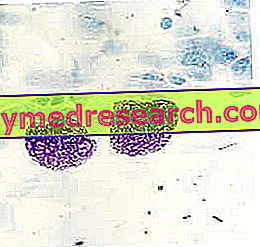What is Sulla Honey?
General information on the Sulla honey
Like all honeys, also that of Sulla is a product of the hive secreted by European honey bees (Genus Apis specie mellifera ) in the period between April and June.

Sulla honey is a sweet food of animal origin used mainly as a natural sweetener to add: in drinks, in various types of recipes and on bread or similar products (rusks, etc.).
From a nutritional point of view, the Sulla honey does not differ much from other types of honey. It is very caloric and rich in simple sugars; the unpasteurized one also contains several nutritional factors beneficial to the body. In the diet of healthy people it can be consumed regularly but with appropriate frequency and portions.
Typical Italian, the Sulla honey is almost entirely of southern origin, where there are abundant fallow or wild plots colonized by the so-called Sulla ( Hedysarum coronarium ).
Insights: Sulla botany
Sulla is a plant belonging to the Fabaceae family, or leguminous plants; it is therefore a distant relative of beans, peas, fava beans, chickpeas, lentils, lupins, grass peas etc. Of the genus Hedysarum and coronarium species, Sulla is a herbaceous plant widespread in the center but above all in southern Italy (Sicily, Sardinia, Basilicata, Molise, Abruzzo, Tuscany).
In agriculture it is often used to leave the plots at rest and to enrich them, because like all Fabaceae it has the characteristic of fixing nitrogen to the soil making it more fertile. Like alfalfa, the adult plant is used in the forage sector as a feed for herbivores.
Sulla has no major climatic and environmental needs; far from it. It is a resistant plant that requires a Mediterranean climate and does not particularly suffer from drought or compact and clayey soils.
Description
Description of Sulla Honey
Sulla honey has a pale yellow color, straw-colored, rarely amber, more often almost transparent, and a fairly liquid consistency which nevertheless crystallizes quickly (this last characteristic distinguishes it from that of acacia and lavender, quite similar to appearance, above all just extract); once crystallized it is whitish or beige. It has a very delicate taste, sweet taste (without bitter aftertaste) and pleasant aroma of wild herbs; due to its proximity to the flowering citrus groves, the bees that produce Sulla honey can give rise to an impure but extremely characteristic product.
Why the Sulla Cristallizza honey in a hurry?
The crystallization of honey is an aggregation phenomenon that gives rise to real solid and sugary agglomerates similar to very fine "sandblasts".
Crystallization takes place thanks to four predisposing factors: temperature below 45-50 ° C (better if at 10 ° C), fructose / glucose ratio higher than 1.3, humidity lower than 18-19%, impurities.
Sulla honey contains glucose in quantities over 30% and a rather low concentration of water, which is why it crystallizes rapidly. The only way to make it and keep it liquid is to heat it to temperatures above 45 ° C and dilute it slightly, an aspect that however compromises the content of thermolabile molecules.
Sulla Honey Nutritional Properties
Nutritional characteristics of Sulla honey
Sulla honey is a very caloric product. It provides over 300 kcal per 100 g, most of which is supplied by simple sugars such as glucose, fructose and sucrose. Proteins and lipids appear to be contained in marginal quantities. Cholesterol, fiber, lactose, gluten and histamine are absent. May contain potentially allergenic molecules. There are minerals (zinc, iron, copper, magnesium and manganese) and vitamins (vitamin A, vitamin C and some of the B complex), although in variable and not always significant concentrations. On the other hand, due to pasteurization (mandatory for marketing) a part of the thermolabile vitamins (for example vit C) is inexorably compromised.
Sulla honey is a food that lends itself, in medium portions and with a frequency of normal consumption, to the diet of healthy people. However, excessive amounts of Sulla honey are contraindicated in the diet of obese, type 2 diabetic and hypertriglyceridemic. It can increase the risk of tooth decay. It is pertinent to any other type of nutritional scheme (of celiac, lactose intolerant, histamine, etc.), except for specific allergic forms.
Many use the Sulla honey as a substitute sweetener for table sugar. With the same portion, honey contains about 33% less carbohydrates and calories. However, it should be noted that this also has a lower sweetening power compared to sucrose; for this reason, sometimes it is necessary to use more to obtain the same sweetening effect. Ultimately, replacing table sugar with honey has ONLY a caloric advantage by maintaining the same portion, which is why using more than necessary would nullify the nutritional advantage mentioned above.
The average portion of Sulla honey is about 20 g (60 kcal).
All about honey
X Problems with video playback? Reload from YouTube Go to Video Page Go to Wellness Destination Watch the video on youtubeSulla honey in the kitchen
Culinary use of Sulla honey
Sulla honey is mainly used as a natural sweetener. With a delicate flavor, it is ideal for sweetening sober drinks such as chamomile, tea and other types of infusion.
It is also excellent spread on bread or on rusks, while as regards the addition in recipes it must be remembered that, having a not too high sweetening power, it could require higher doses than acacia honey, chestnut honey, etc.



